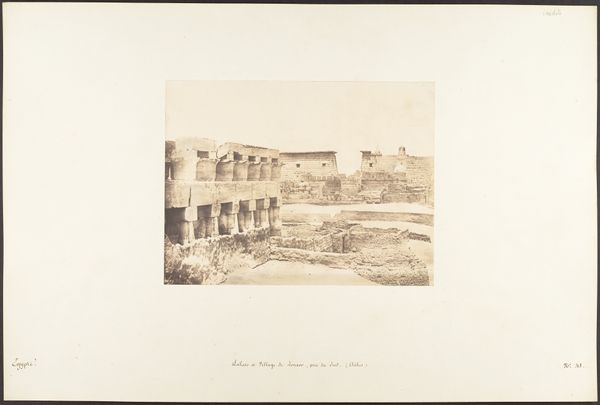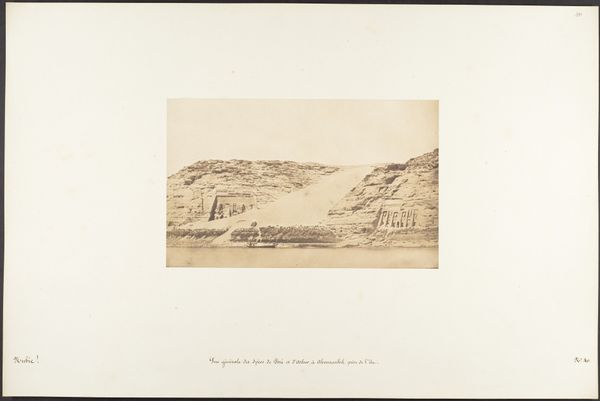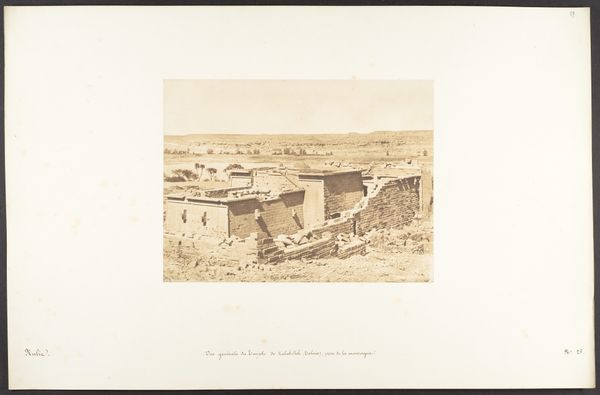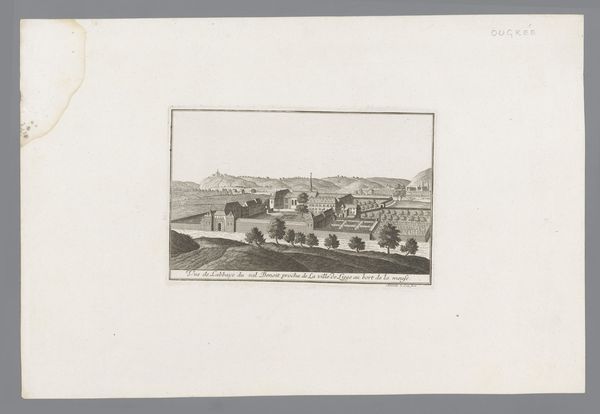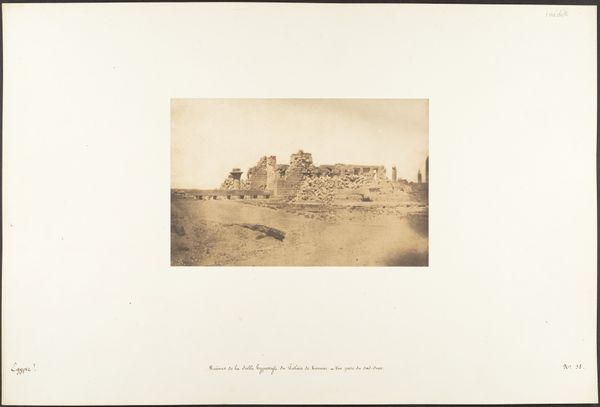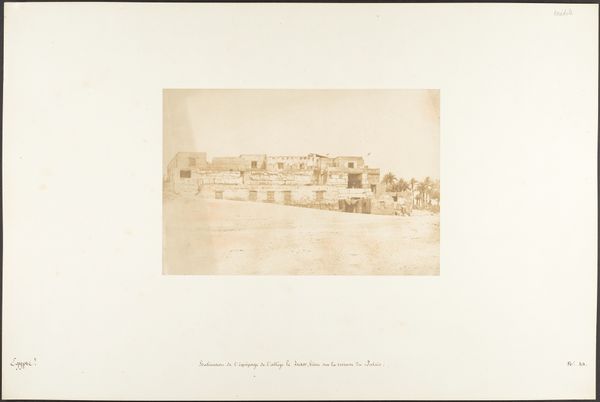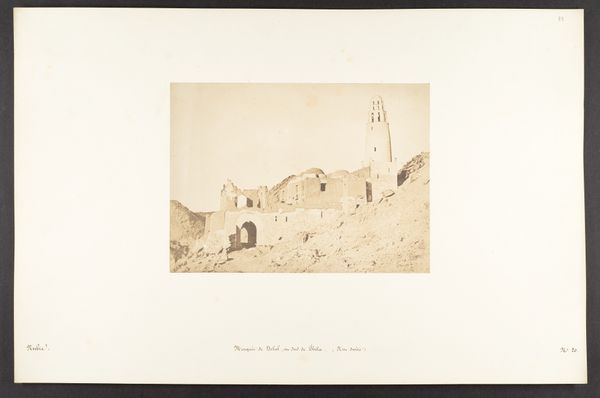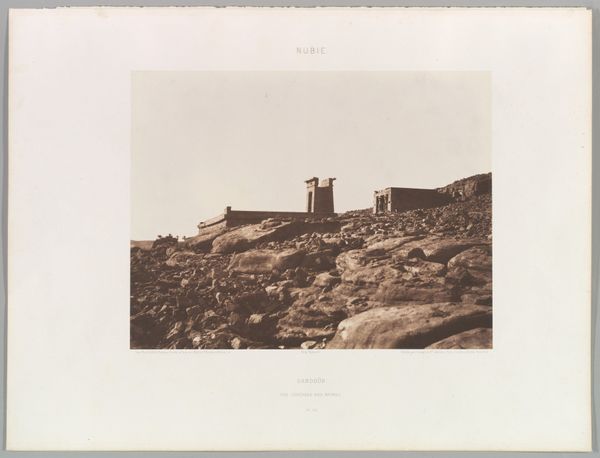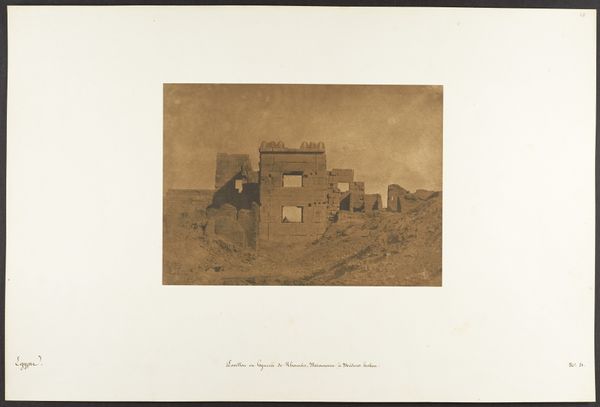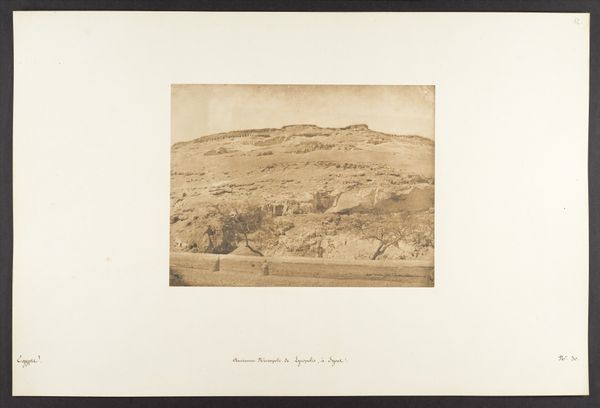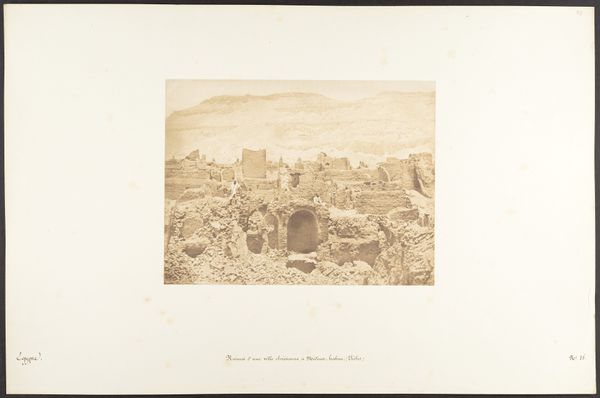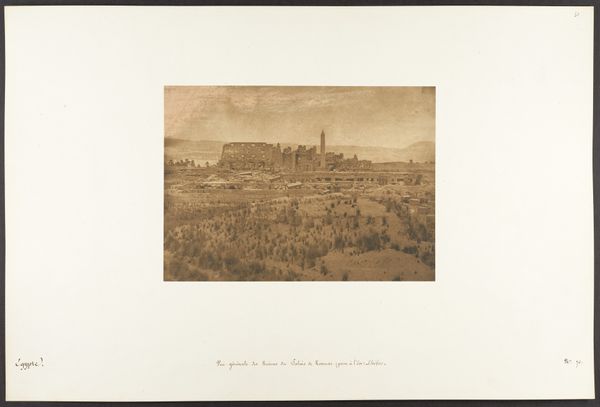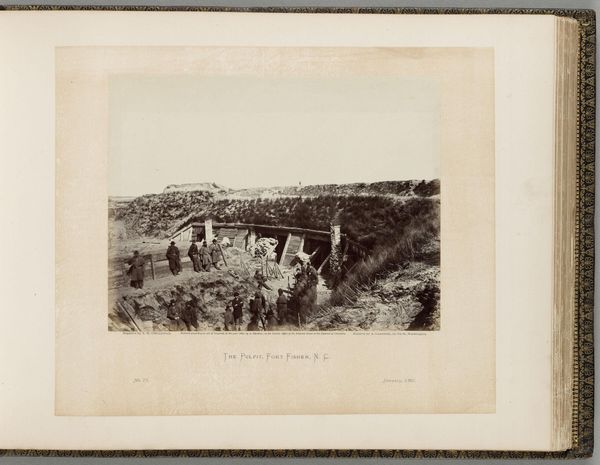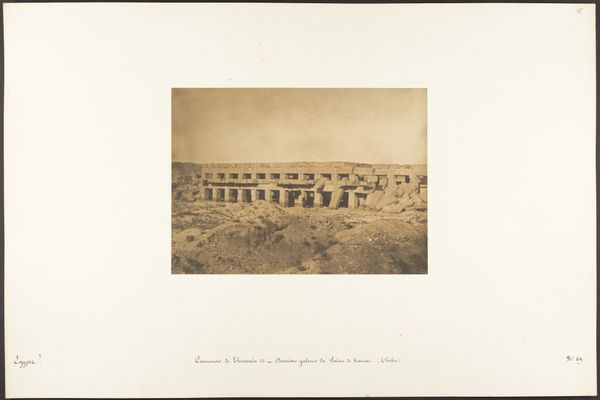
Moitié de la façade du Spéos d'Athor, à Abousembil (partie méridionale) 1850
0:00
0:00
photography, gelatin-silver-print, architecture
#
landscape
#
ancient-egyptian-art
#
photography
#
ancient-mediterranean
#
gelatin-silver-print
#
architecture
Dimensions: Image: 6 5/8 × 8 11/16 in. (16.9 × 22.1 cm) Mount: 18 11/16 × 12 5/16 in. (47.5 × 31.2 cm)
Copyright: Public Domain
Maxime Du Camp made this photograph of the Temple of Hathor at Abu Simbel using a waxed paper negative, likely in 1850. Du Camp traveled to Egypt as part of a literary and photographic expedition with Gustave Flaubert. Consider how photography in the 19th century was used as a tool for European travelers to document and, in some ways, claim ownership over foreign lands and cultures. This documentation often occurred through a Western lens, emphasizing the photographer's perspective. In many cases, like this one, the local inhabitants were notably absent from these images, thus creating a one-sided narrative. How does the photographer's choice to focus solely on the monument alter or reinforce colonial power dynamics? What does it mean to look at this temple, a space of worship for the ancient Egyptians, through the eyes of a colonizer?
Comments
No comments
Be the first to comment and join the conversation on the ultimate creative platform.
